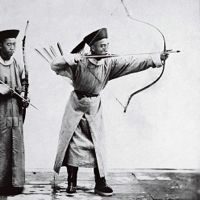By Peter Dekker, February 21, 2014
The Qing dynasty had a strong alliance with Tibet, protecting it from conflicts while relying on the Dalai Lama's authority over many Mongolian tribes. Tibetan Buddhism was also widespread among Manchus. The Qianlong emperor was a well-known patron of Tibetan bhuddism. That he didn't just put up a political show to please the Qing-Tibetan ties became clear when nationalist grave robbers opened his tomb. All walls were covered in sanskrit texts and Tibetan Buddhist imagery, and next to the Qianlong emperor was the love of his life, empress Lady Fuca who he lost when she was only 36. It was the contents of this tomb that perhaps showed the Qianlong emperor's true colors.
Tibetan archery goes back a long way, and is still practiced today in tournaments and celebrations. Artwork of the land-locked empire depicts bows and arrows from bordering cultures. In the Tibet of the 19th and 20th centuries we predominantly see two types of bows. A bamboo sports bow and a long eared composite bow. The composite bow of the Tibetans is much like that of the Manchu, with the most notable difference that the ears are shorter. This makes for a bow that is easier to make, maintain, and shoots a medium weight arrow slightly faster than a Manchu bow would of the same poundage. Such bows are seen in artwork from at least the Qianlong era (1736-1796), always in the hands of minority peoples that inhabit Tibet, Qinghai and Yunnan. Antique bows, some of them still in use today, are between 50 and 70 pounds of draw.
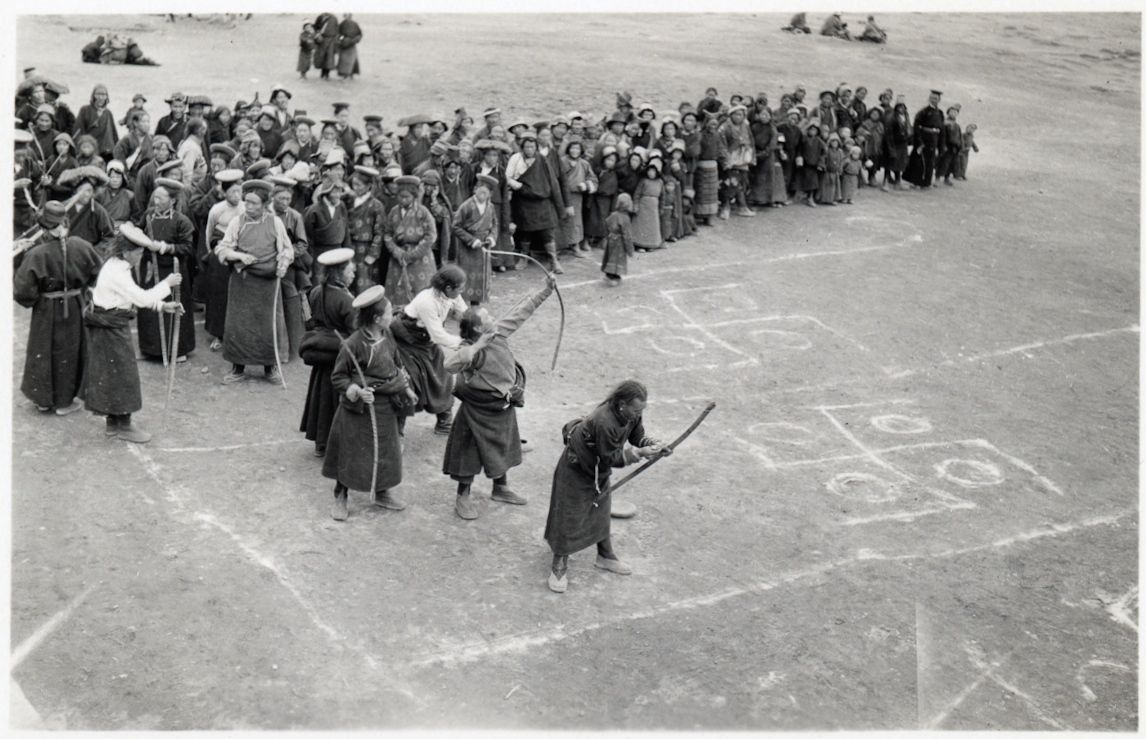
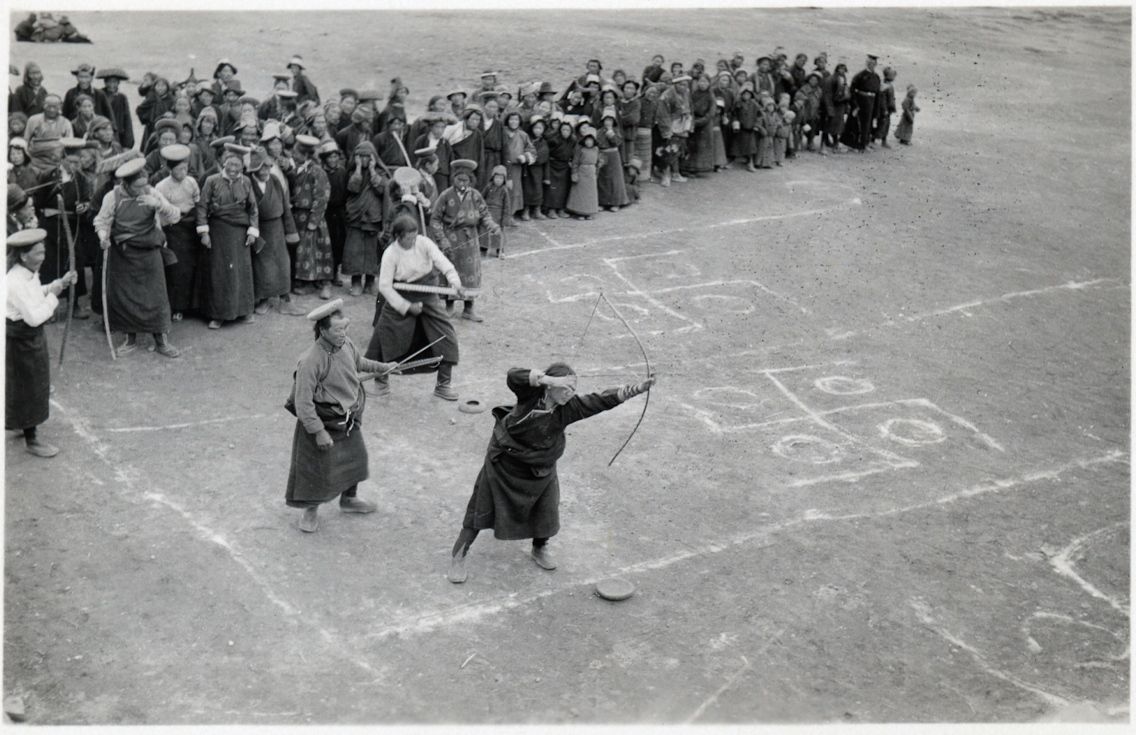
1.) Archers competing outside Lhalu, Lhasa. February 1937. Photo by Frederick Spencer Chapman. Pitt-Rivers museum photo archives.
Comments:
The documentation of these photographs include: "Archery competition near the Lhalu mansion. Lhasa noblemen represented by their servants. Bows are of yak horn and bamboo and bowstrings of nettle". Setting: "The Mission visited Lhalu Mansion on February 15th 1937 to have a farewell dinner with Ringang. This event was probably taking place in the environs of the Mansion on the occasion of that visit." These bows seem to be of a native Tibetan type that have yet to turn up in museum or antique collections. See the British Museum website for more info and a zoom option.
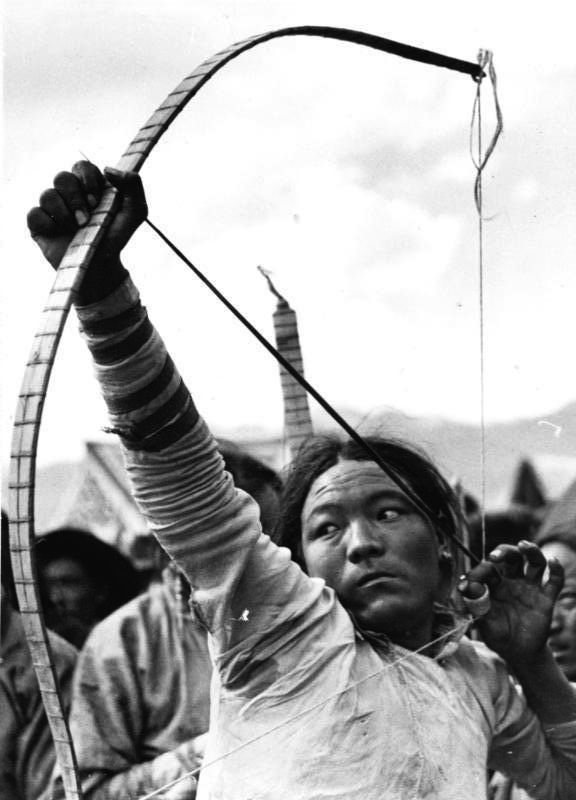
2.)Ernst Schäfer, Lhasa. June 21st, 1938. Photo currently held in the Sven-Hedin-Institut für Innerasienforschung (Bild 135-S-18-07-16).
Comments:
A Tibetan woman shooting a bow very similar to the bows shot in the above pictures. She uses a cylindrical thumb ring like the Manchus. Notice the very thin tapered arrow with hardly any fletchings.
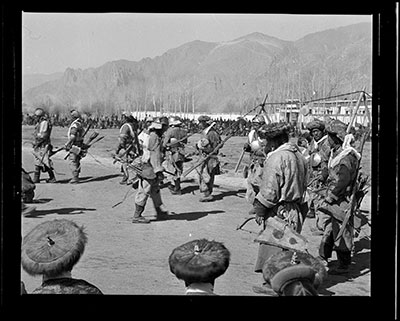
3.) "Soldiers dressed in uniform of Tibetan and Mongol army", Lhasa, March 8th 1937. Photo by Hugh E. Richardson.
Comments:
Some soldiers at the 'Gallop Behind the Fort' festival, held on the 26th day of the first Tibetan month featuring a shooting competition between the Yaso's (generals) cavalrymen. See the British Museum website for more info and a zoom option.
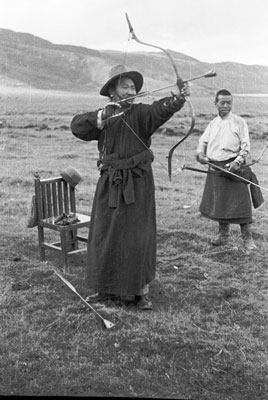
3.) This photo is on loan to the Pitt Rivers museum from the Neame estate, further provenance unknown.
Comments:
Provenance unknown. We see two archers with Tibetan style composite bows that are closely related to the standard Qing bow, albeit with shorter ears. See the British Museum website for more info and a zoom option.
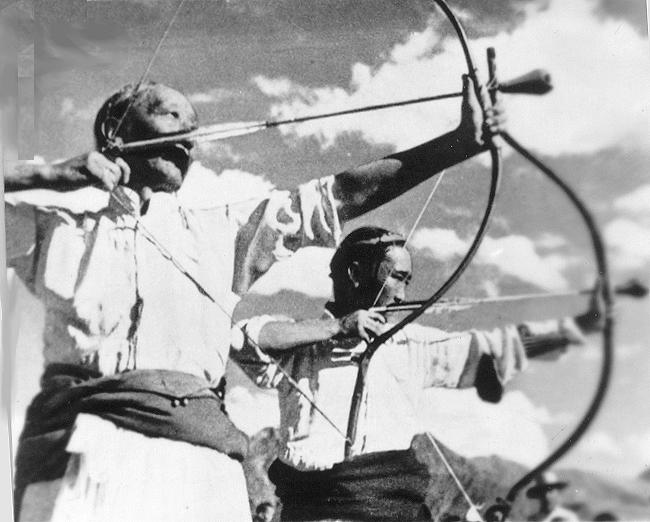
4.) Archers in Lhasa in 1954. Photo by professor Wang Yao
Comments:
Two archers about to shoot their long whistle arrows with their typical Tibetan style composite bows.
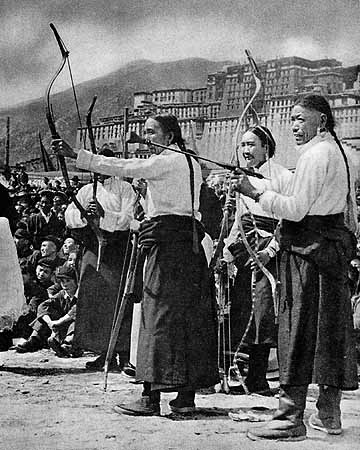
5.) Archers shooting outside Potala Palace. From China Reconstructs, Vol V, 1956.
Comments:
A group of Tibetan archers competing with the same type of whistling arrows as the previous picture.
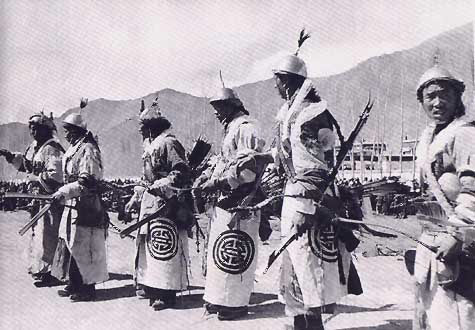
6.) Monlam festival celebration, date and photographer unknown.
Comments:
The Monlam festival celebrates the assumption of 5th dalai lama in 17th cent. Image caption says they are dressed in Mongol uniforms, yellow with red

7.) Tibetan Cavalry welcomed Count Tolstoy and Captain Dolan when they rode into Lhasa
Comments:
Tibetan Cavalry welcomed Count Tolstoy and Captain Dolan when they rode into Lhasa. They were an American envoy sent to the then 7 year old Dalai Lama by president Roosevelt in 1942. More info on the incredible journey can be found here. Note the typical Tibetan quiver, related more to Islamic quivers harking back to the times of the Mongolian invasions. Such quivers are all too often mistaken for Chinese quivers, some of which had similar construction but which are typically much shorter and wider.
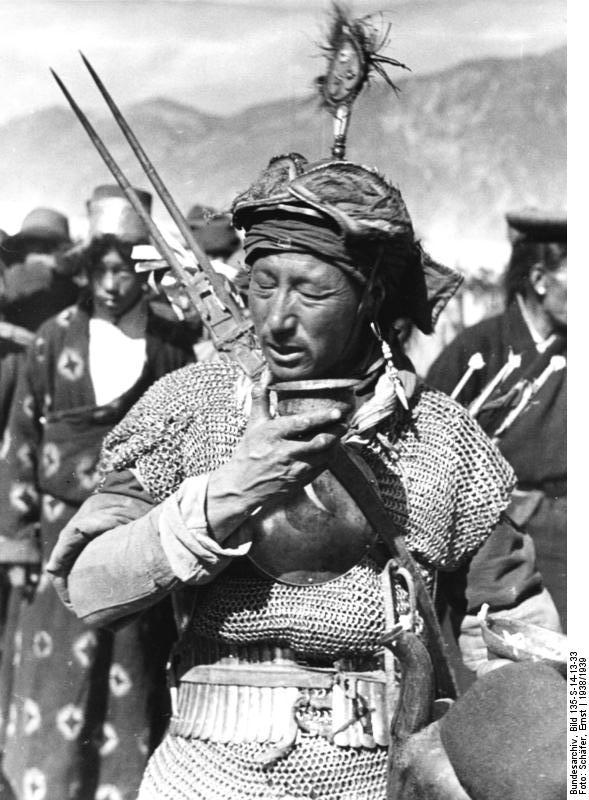
8.) Lhasa, New Year's Parade, 1938 / 1939.
Comments:
Note the arrow tail ends sticking out above his shoulder on the right side of the picture. These festivities includes shooting the bow and musket from a horse. Photo by Ernst Schäfer, Deutsches Bundesarchiv accession number 135-S-14-13-33.
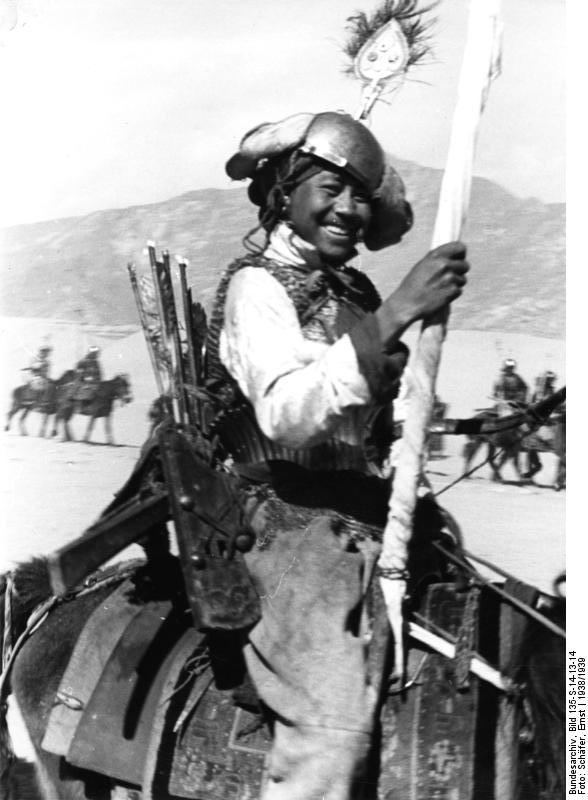
9.) Lhasa, New Year's Parade, 1938 / 1939.
Comments:
A smiling Tibetan warrior archer with his bow and arrows worn on his belt alongside a matchlock musket. Note the elongated quiver with cross-straps, the standard quiver type used in Tibet. Photo by Ernst Schäfer, Deutsches Bundesarchiv accession number 135-S-14-13-14.
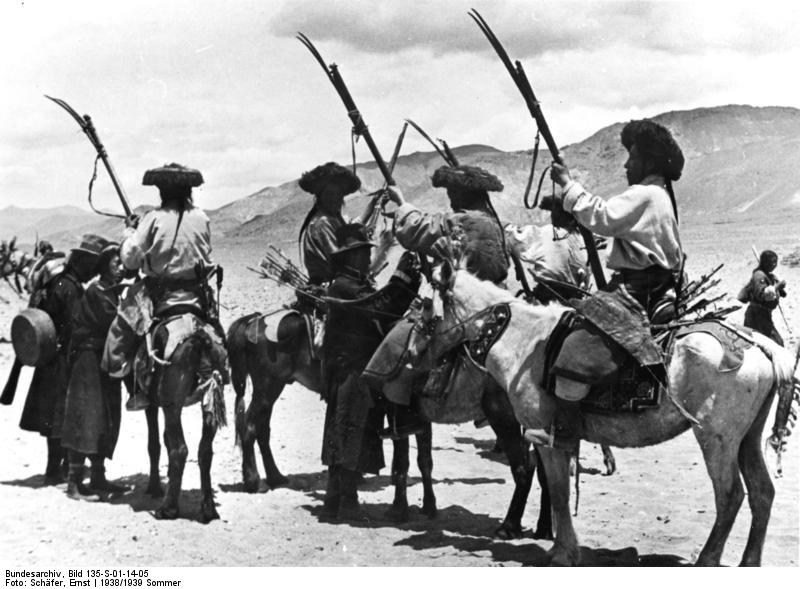
10.) Lhasa, New Year's Parade, 1938 / 1939.
Comments:
A group of mounted archer-musketeers getting ready to do their musket shots from horseback. Note the typical short Tibetan bow cases. Photo by Ernst Schäfer, Deutsches Bundesarchiv accession number 135-S-01-14-05.
Comments, questions? Discuss Manchu archery in our Facebook group:

For more material of Chinese, Manchu and Mongolian archers, see:
- - - Do you know of any more Manchu, Mongolian or Tibetan archery pictures not listed here? If so, DO let me know! - - -

